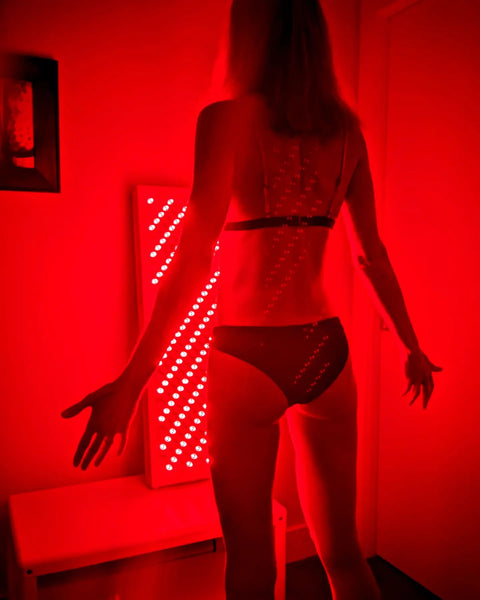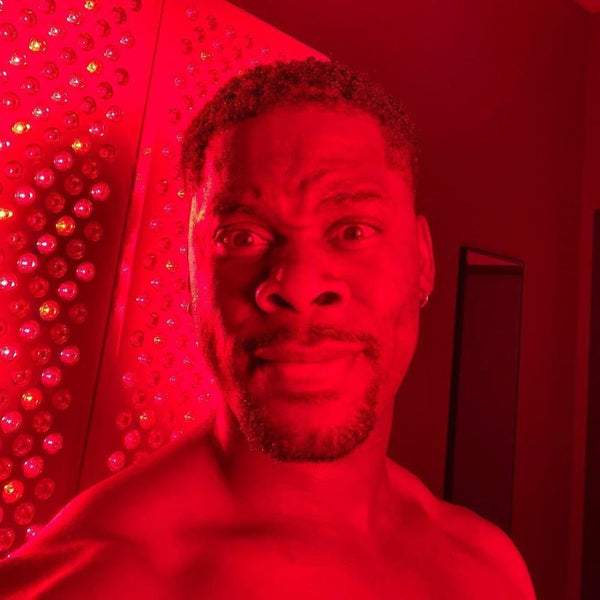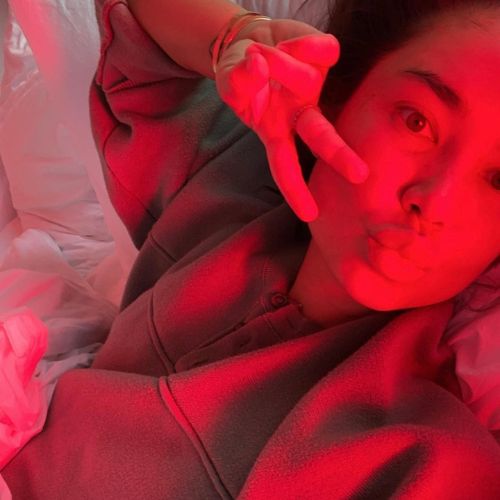
The Science of Red Light Therapy and Cell Health
The Science of Red Light Therapy and Cell Health
Red light therapy (RLT) is becoming increasingly popular as a way to improve health at a cellular level. But what exactly is it, and how does it work? In simple terms, RLT uses specific wavelengths of light to penetrate the skin and boost the health of your cells.
This therapy has been shown to help with everything from skin rejuvenation to muscle recovery. In this article, we’ll explore the science behind red light therapy and its benefits for cell health.
How Red Light Therapy Improves Cell Health
Red light therapy (RLT) directly impacts cell health in several key ways, making it a powerful tool for enhancing overall well-being. Here’s how it works:
Promoting Cellular Energy Production

RLT boosts the production of ATP, the energy currency of the cell. With more ATP, cells can perform their functions more efficiently, leading to better overall health. This increased energy supports everything from basic cell maintenance to complex processes like tissue repair and regeneration.
Benefits:
- Enhanced Cell Function: Cells operate at their best with more energy.
- Improved Healing: Faster recovery from injuries and wounds.
- Increased Vitality: More energy at the cellular level translates to more energy for you.
Reducing Inflammation and Oxidative Stress

Inflammation and oxidative stress are major contributors to many chronic diseases. RLT helps reduce these by balancing the levels of free radicals and antioxidants in the body. This leads to less cellular damage and a lower risk of chronic conditions.
Benefits:
- Less Pain: Reduced inflammation can alleviate conditions like arthritis.
- Healthier Cells: Lower oxidative stress means less damage to cells.
- Chronic Disease Prevention: Helps in reducing the risk of diseases caused by inflammation.
Enhancing Cellular Repair and Regeneration

One of the most significant benefits of RLT is its ability to speed up cellular repair and regeneration. This is particularly important for skin health, muscle recovery, and wound healing. By promoting faster cell turnover, RLT helps maintain healthy tissues and accelerates the healing process.
Benefits:
- Skin Rejuvenation: Improves skin texture and reduces signs of aging like wrinkles.
- Muscle Recovery: Faster recovery from workouts and injuries.
- Wound Healing: Quicker healing of cuts, burns, and other wounds.
What is Red Light Therapy?
Definition and Overview
Red light therapy is a treatment that uses red light wavelengths to heal and improve various conditions. It’s safe, non-invasive, and doesn’t involve any harmful UV rays. Common uses include treating skin conditions, reducing pain, and improving healing.
Key Points:
- Wavelengths: Uses light source in the 620-750 nm range.
- Safety: Safe for most people with no downtime.
- Uses: Skin care, pain relief, and healing.
How Does Red Light Therapy Work?
When red light enters the skin, it reaches the cells' mitochondria, which are responsible for producing energy. The light boosts the production of ATP (the cell's energy source), helping the cells repair and function better. This process can reduce inflammation and speed up healing.
How It Works:
- Boosts Energy: Increases ATP production in cells.
- Reduces Inflammation: Helps reduce swelling and pain.
- Speeds Healing: Aids in quicker tissue repair.
The Science Behind Red Light Therapy
Red light therapy’s benefits are grounded in science, particularly in how light interacts with our cells. The key to this interaction lies in a process called photobiomodulation (PBM). When red light is absorbed by the mitochondria—the powerhouse of the cell—it boosts the production of adenosine triphosphate (ATP), which is the primary energy source for cellular activities.
Why This Matters:
- Increased Energy: More ATP means cells have more energy to repair damage and perform their functions better.
- Reduced Oxidative Stress: Red light helps balance free radicals and antioxidants in the body, reducing cell damage and inflammation.
- Enhanced Healing: With more energy and less stress, cells can regenerate and heal more effectively.
Scientific Support: Multiple studies have shown that red light therapy can:
- Improve skin health by stimulating collagen production.
- Reduce muscle soreness and speed up recovery after exercise.
- Help in wound healing by accelerating tissue repair.
Applications of Red Light Therapy
Red light therapy (RLT) is versatile, with applications spanning from skincare to muscle recovery. Here’s how it’s used in various health and wellness areas:
Skin Health and Dermatology
RLT is widely used to improve skin health. By boosting collagen production, it helps reduce wrinkles, fine lines, and scars. It’s also effective in treating conditions like acne and psoriasis.
Benefits:
- Wrinkle Reduction: Stimulates collagen for smoother, younger-looking skin.
- Scar Healing: Promotes skin repair, reducing the appearance of scars.
- Acne Treatment: Reduces inflammation and bacteria, improving acne.
Case Study: A clinical trial published in Dermatologic Surgery found that patients who received red light therapy twice a week for 12 weeks saw a significant reduction in wrinkles and improved skin tone.
Muscle Recovery and Performance Enhancement
Athletes and fitness enthusiasts use Red light therapy devices to speed up muscle recovery and enhance performance. The therapy reduces muscle soreness, promotes faster healing of injuries, and can even improve endurance by boosting cellular energy.
Benefits:
- Faster Recovery: Reduces muscle soreness after workouts.
- Injury Healing: Speeds up the repair of muscle strains and injuries.
- Performance Boost: Enhances endurance by increasing cellular energy.
Fact: A study in the Journal of Biophotonics showed that athletes using Red and near-infrared light therapy before exercise experienced less muscle fatigue and faster recovery compared to those who did not.
Pain Management and Inflammation Reduction
LED light is also effective in managing chronic pain and reducing inflammation. It’s commonly used to treat conditions like arthritis, joint pain, and fibromyalgia. The therapy’s anti-inflammatory effects can alleviate pain without the need for medication.
Benefits:
- Arthritis Relief: Reduces joint inflammation and pain.
- Chronic Pain Management: Helps in managing pain from conditions like fibromyalgia.
- Non-Invasive: Provides pain relief without drugs or surgery.
Table: Conditions Treated with RLT
| Condition | Effect of RLT |
|---|---|
| Arthritis | Reduces joint inflammation |
| Fibromyalgia | Manages widespread chronic pain |
| Tendinitis | Speeds up recovery and reduces pain |
| Joint Pain | Alleviates pain and improves mobility |
Wound Healing and Tissue Repair
Efficacy of red light therapy is particularly beneficial in promoting wound healing and tissue repair. Whether it’s a minor cut or a surgical wound, red light therapy can speed up the healing process, reduce scar formation, and enhance tissue regeneration.
Benefits:
- Quicker Healing: Reduces healing time for wounds and injuries.
- Scar Reduction: Minimizes scar tissue formation.
- Tissue Regeneration: Promotes healthy tissue growth and repair.
Fact: Research published in Lasers in Surgery and Medicine shows that RLT significantly accelerates the healing of wounds by enhancing tissue repair processes.
How to Safely Use Red Light Therapy
While red light therapy (RLT) is generally safe and easy to use, there are a few guidelines and precautions to keep in mind to maximize its benefits and avoid potential issues.
Guidelines for Using Red Light Therapy at Home
If you’re considering using red light therapy at home, it’s important to follow these guidelines to ensure safety and effectiveness:
- Choose the Right Device: Ensure that the RLT device you select is from a reputable manufacturer and designed for home use. Look for devices that provide the correct wavelength (typically between 620-750 nm) and power density.
- Follow the Instructions: Each RLT device comes with specific instructions for use. Follow these carefully, paying attention to the recommended duration and frequency of sessions.
- Start Slowly: If you’re new to red light therapy, start with shorter sessions (about 5-10 minutes) and gradually increase the duration as your body adjusts.
- Protect Your Eyes: Although RLT is generally safe, it’s a good idea to avoid direct exposure to the eyes. Some devices come with protective goggles, or you can close your eyes during treatment.
- Consistency is Key: For the best results, use red light therapy consistently. Regular sessions, 3-5 times per week, are often recommended.
Table: Recommended RLT Usage for Different Purposes
| Purpose | Session Duration | Frequency |
|---|---|---|
| Skin Rejuvenation | 10-20 minutes | 3-5 times per week |
| Muscle Recovery | 15-30 minutes | After workouts |
| Pain Management | 10-20 minutes | Daily or as needed |
| Wound Healing | 10-15 minutes | Daily until healed |
Potential Side Effects and Precautions
While RLT is safe for most people, some individuals may experience mild side effects. These are generally rare and can be minimized by following proper usage guidelines.
Common Side Effects:
- Mild Skin Irritation: Some users may experience slight redness or irritation after treatment, particularly if they have sensitive skin.
- Eye Strain: Prolonged exposure without eye protection can lead to discomfort or eye strain.
Precautions:
- Avoid Overuse: More isn’t always better. Stick to the recommended session times to avoid overstimulation of the skin.
- Consult Your Doctor: If you have a medical condition, are pregnant, or are taking medications that make your skin sensitive to light, consult your healthcare provider before starting RLT.
Integrating RLT into a Healthy Lifestyle
Red light therapy can be an effective addition to a healthy lifestyle. Here are some tips on how to incorporate it:
- Combine with a Balanced Diet: Eating a diet rich in antioxidants can enhance the benefits of RLT by further reducing oxidative stress in the body.
- Pair with Exercise: Use RLT before or after workouts to improve performance and speed up recovery.
- Practice Good Skincare: If you’re using RLT for skin health, combine it with a good skincare routine to maximize results.
Tip: Regular hydration also supports cellular health, making RLT more effective.
Common Myths and Misconceptions About Red Light Therapy
Despite its growing popularity, red light therapy (RLT) is often surrounded by myths and misconceptions. Here, we’ll debunk some of the most common ones and clarify what RLT can and cannot do.
Debunking Popular Myths
-
Myth: Red Light Therapy is a Miracle Cure
- Reality: While RLT offers a wide range of benefits, it’s not a cure-all. It can significantly improve certain conditions, like skin health, pain management, and muscle recovery, but it should be seen as part of a broader treatment plan, not a standalone solution.
-
Myth: Red Light Therapy Works Instantly
- Reality: led light therapy requires consistent use over time to see noticeable results. While some people may experience benefits after a few sessions, most will need several weeks of regular treatment to observe significant changes.
-
Myth: Red Light Therapy is the Same as UV Light Therapy
- Reality: RLT and UV light therapy are fundamentally different. UV light can damage the skin and increase the risk of skin cancer, while laser therapy is non-invasive, safe, and does not cause skin damage.
-
Myth: Any Red Light Will Work
- Reality: Not all red light is created equal. Effective laser light therapy devices use specific wavelengths of light (typically between 620-750 nm) that penetrate the skin to the right depth. Ordinary red lights, like those in lamps or bulbs, do not have the same therapeutic effects.
Understanding What Red Light Therapy Can and Cannot Do
What Red Light Therapy Can Do:
- Improve Skin Health: By boosting collagen production, Red light therapy may reduce wrinkles, fine lines, and scars.
- Enhance Muscle Recovery: RLT helps reduce muscle soreness and speeds up recovery after exercise.
- Alleviate Pain: It can reduce inflammation and pain in conditions like arthritis and tendinitis.
- Accelerate Healing: RLT promotes quicker healing of wounds and injuries.
What Red Light Therapy Cannot Do:
- Cure Chronic Diseases: While RLT can help manage symptoms, it’s not a cure for chronic diseases such as cancer, diabetes, or heart disease.
- Replace Medical Treatments: RLT should complement, not replace, traditional medical treatments. It’s important to consult with a healthcare provider for serious medical conditions.
- Provide Immediate Results: Patience and consistency are key. It takes time for the benefits of RLT to manifest.
FAQs About Red Light Therapy and Cell Health
Q: What is the optimal duration for RLT sessions?
- A: Typically, sessions last between 10-20 minutes, depending on the specific treatment goals.
Q: Can RLT help with chronic conditions?
- A: RLT can help manage symptoms of chronic conditions like arthritis by reducing inflammation and pain, but it’s not a cure.
Q: Is red light therapy safe for everyone?
- A: RLT is safe for most people, but those with certain medical conditions or who are pregnant should consult with a healthcare provider before starting treatment.
Q: How quickly can I expect to see results from RLT?
- A: Some people notice improvements within a few sessions, but most will need several weeks of consistent use to see significant results.
Q: Can RLT be combined with other treatments?
- A: Yes, RLT can complement other treatments, such as physical therapy or skincare routines, to enhance overall results.
Conclusion: The Science of Red Light Therapy and Its Impact on Cell Health
Red light therapy (RLT) is a promising treatment that offers a wide range of benefits for cell health, from improving skin condition to enhancing muscle recovery and reducing pain. By understanding the science behind how red light interacts with our cells—boosting energy production, reducing inflammation, and accelerating healing—we can better appreciate its potential in promoting overall well-being.
While RLT is not a miracle cure, its ability to support cellular functions makes it a valuable addition to a healthy lifestyle. Whether you’re looking to rejuvenate your skin, speed up recovery after exercise, or manage chronic pain, Light-emitting diode therapy offers a non-invasive, scientifically-backed approach to improving your health.
As with any therapy, it’s essential to use red light therapy consistently and in conjunction with other healthy practices like a balanced diet, regular exercise, and proper skincare. And remember, while RLT and blue light is safe for most people, it’s always a good idea to consult with a healthcare provider if you have any underlying conditions or concerns.
In summary, red light therapy is a powerful tool in the quest for better cell health, and when used correctly, it can lead to significant improvements in your quality of life.





